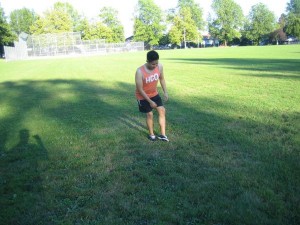The knee is considered as the biggest hinged joint in the body and it is prone to problems. Many individuals all over the world have suffered knee pain and stiffness at some point in their lives. Fluid in the knee or knee effusion can be caused by trauma, overuse and even certain diseases.
http://youtu.be/wZLULdRbMdQ
Measures to reduce fluid in the knee

- Instruct the individual to stop any activity that caused the knee to swell such as jumping or running. Always remember that any activity that makes the knee hurt or swell must be stopped. The individual must also avoid driving if it leads to discomfort when operating the gas or brake pedals.
- Encourage the individual to rest with the leg elevated to minimize the swelling. By resting the affected knee, it allows the fluid to drain away while at the same time reduce pressure on the joint. Instruct the individual to avoid walking or putting weight on the knee until the fluid accumulation and pain diminished.
- You can apply an ice pack to help reduce the pain and buildup of fluid. By enrolling in a first aid course, you will learn how effective ice works on injuries. All you have to do is to register in a course. Always remember that the ice pack must not be applied directly on the skin. It must be wrapped in a clean cloth or towel before applied on the skin. The ice pack must be applied for 15-20 minutes every 2-4 hours as needed.
- The affected leg must be wrapped with an elastic bandage in order to minimize the accumulation of fluid on the knee. Just make sure that it is not wrapped too tightly since it can cut off the circulation. The bandage must be removed if tingling or numbness in the foot occurs or if the foot feels warm to the touch.
- Provide non-steroidal anti-inflammatory drugs (NSAIDs) such as naproxen or ibuprofen to reduce the inflammation. These medications must be taken with food in order to prevent irritation of the stomach. Pain relievers such as acetaminophen can be given to provide relief to the pain but it will not reduce the inflammation in the knee.
- Consult a doctor if the fluid in the knee lasts for more than a few days or if the cause of the fluid accumulation could not be determined. The doctor might decide to aspirate the fluid by inserting a needle into the knee and draw out the fluid into a syringe. The fluid will be taken to a laboratory for analysis to determine the cause of the buildup. In most cases, antibiotics as well as corticosteroids might be given to minimize the swelling.
- If the pain persists as well as other symptoms such as fever, these can indicate a complication such as infection. This would require immediate medical attention.
Important considerations to bear in mind
If the pain or swelling continues to persist, the individual must consult a doctor to prevent the condition from progressing into a chronic one. If the individual engages in sports, he/she must wear knee pads to prevent injuries.
